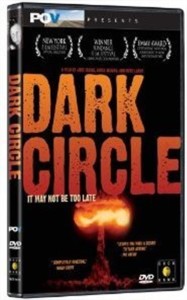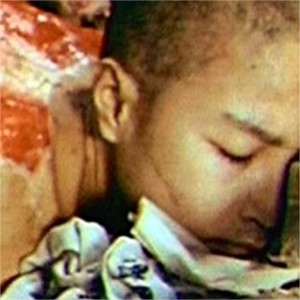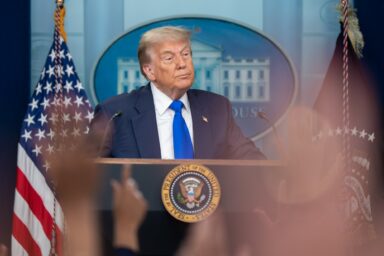In the final part of our series, the story of the color film of Hiroshima and Nagasaki that was locked and hidden from Americans—and even the Japanese—for decades. Frame by frame, the footage captured the horrors. If not for certain people, almost no one would have ever seen it.
For the people of Hiroshima and Nagasaki, the atomic bomb was nothing short of cataclysmic. But Americans were shown a sanitized version of the devastation, and for many years, photographic evidence of the real damage was locked away. This is the final part of our three part series on the Atomic Cover-up. You can read the first two parts in the series here and here.
Japan Chases Its History
In the mid-1970s, Japanese activists discovered that few pictures of the aftermath of the atomic bombings of Hiroshima and Nagasaki existed in their country. Many of the images had been seized by the U.S. military and taken out of Japan. The Japanese had as little visual exposure to the true human effects of the bomb as had most Americans. Activists, led by Tsutomu Iwakura, tracked down hundreds of photographs in archives and private collections, published them in a popular book and, in 1979, mounted an exhibit at the United Nations in New York.
There, by chance, Iwakura met Herb Sussan, a former network TV producer, who informed him about the existence of color footage shot by a U.S. military film crew not long after the bombings. Sussan had been with the documentary crew, along with then-Lt. Daniel McGovern, a combat photographer and film director with the U.S. Air Force.

After a little digging, Iwakura found the color footage at the National Archives. About one-fifth of it showed the devastation of Hiroshima and Nagasaki after the atomic bombs went off. According to a shot list, reel #11010 included, for example: “School, deaf and dumb, blast effect, damaged Commercial school demolished School, engineering, demolished. School, Shirayama elementary, demolished, blast effect. Tenements, demolished.” Included were many minutes of stoic survivors sadly, or in anger, displaying their burns and scars. The rest of the footage was shot in several other cities.
Actually, the film had been quietly declassified a few years earlier, but the outside world seemed unaware of it. An archivist there later told me, “If no one knows about the film to ask for it, it’s as closed as when it was classified.”
In short order, Iwakura raised half a million dollars from more than 200,000 Japanese citizens to buy a copy of the color footage. Then he traveled around Japan filming survivors who had posed for the U.S. military cameramen in 1946. Iwakura completed his compilation film, entitled “Prophecy”, and arranged for the June 1982 New York premiere described in Part 1 of this series.
 A few months later, brief segments of the McGovern/Sussan footage turned up for the first time in an American film, called “Dark Circle”, which was screened at the 1982, New York Film Festival. The film’s co-director, Chris Beaver, told me,
A few months later, brief segments of the McGovern/Sussan footage turned up for the first time in an American film, called “Dark Circle”, which was screened at the 1982, New York Film Festival. The film’s co-director, Chris Beaver, told me,
“No wonder the government didn’t want us to see it. I think they didn’t want Americans to see themselves in that picture. It’s one thing to know about that and another thing to see it.”
Still, the historic footage drew little attention until the article on Sussan I edited for Nuclear Times was published. It inspired a flood of inquiries at the National Archives.
McGovern told me,
“The main reason [the footage] was classified was because of the horror, the devastation. The medical effects were pretty gory. The attitude was: do not show any medical effects. Don’t make people sick.”
It’s clear that certain people in the U.S. government worked hard to keep the true effects of the Hiroshima and Nagasaki bombings from the American public. Who exactly was behind the cover-up? McGovern told me,
“I always had the sense that people in the AEC were sorry they had dropped the bomb. The Air Force—it was also sorry. I was told by people in the Pentagon that they didn’t want those images out because they showed effects on man, woman and child. But the AEC, they were the ones that stopped it from coming out. They had power of God over everybody. If it had anything to do with nukes, they had to see it. They were the ones who destroyed a lot of film and pictures of the first US nuclear tests after the war.”
“Dark Circle” director Chris Beaver added,
“With the government trying to sell the public on a new civil defense program and Reagan arguing that a nuclear war is survivable, this footage could be awfully bad publicity.”
Sussan was now ill with a form of lymphoma that doctors had found in soldiers exposed to radiation in atomic tests during the 1950s—and among survivors of the Hiroshima and Nagasaki blasts.
To walk in the footsteps of McGovern and Sussan, and meet some of the people they filmed in 1946, I made my own pilgrimage to the atomic cities in the summer of 1984. (My “Atomic Cover-up“ book and e-book has a lengthy chapter describing what it was like to interview survivors on-site.) By then, the U.S. footage had turned up in several new documentaries. In September 1985, Herb Sussan passed away.
Researching “Hiroshima in America,” a book I would write with Robert Jay Lifton in 1995, I discovered the deeper context for suppression of the US Army film: it was part of a broad effort, starting but hardly ending with the Manhattan Project, to suppress a wide range of material related to the atomic bombings, including photographs, reports on radiation effects, information that might have raised questions about the decision to drop the bomb, even that Hollywood movie The Beginning or the End.
“I couldn’t bear to look…”
A documentary film that drew on footage from” the McGovern/Sussan footage premiered at the Tribeca Film Festival in 2004. It was called “Original Child Bomb” and won the top Silverdocs award. (I was the chief adviser.) Later, the film aired on the Sundance cable channel. The film was unflinching and powerful, as its creators intended. It included unforgettable stories of surviving witnesses, such as this one:
“I saw so many corpses drifting in the water…countless bodies came floating… I couldn’t bear to look. People without heads…people without arms…people with their guts hanging out…without eyes…”
Americans who view the footage today can now judge why the authorities suppressed it, and what impact these images, if widely seen, might have had on the nuclear arms race—and could still have on the nuclear proliferation that endangers the world today.
Only small parts of the original 90,000 feet of color film have been used, and a relatively small number of Americans have seen any of it. A major documentary on the footage, and its decades-long suppression, has yet to be made.
Without a full understanding of the effects of nuclear warfare, the American public cannot begin to reach judgment on the future of our vast nuclear arsenal.
Nine nations—so far—have the bomb
After building first-strike weapons and detailing scenarios for their use, the temptation for any nuclear power to use them may one day become irresistible. Treaties today bar the use, testing or proliferation of nuclear weapons, but at least nine nations, with the addition of North Korea, now possess The Bomb. And every American president—except Eisenhower—has endorsed their use against Japan to help bring the Second World War to a swift close.
With terrorist organizations around the world itching to get their hands on a nuclear device, it’s hardly comforting to reflect that a line against using nuclear weapons has been drawn—in the sand.
Greg Mitchell is the author of “Atomic Cover-up” and “Hiroshima in America.”
[box] WhoWhatWhy plans to continue doing this kind of groundbreaking original reporting. You can count on us. Can we count on you? What we do is only possible with your support.
Please click here to donate; it’s tax deductible. And it packs a punch.[/box]



